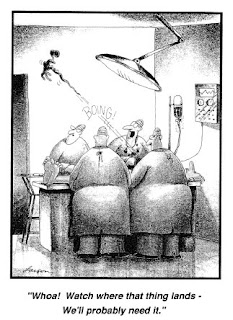What to do?
Tissue engineering to the rescue. Recent research has blended synthetic biology, 3D printing, and a spoonful of sugar to build you a new liver from scratch.
Organ Transplantation
Historically, there has been no other solution to replace a damaged organ than to take a fully developed organ from someone who recently died (or someone very generous) and replace the damaged one. For the most part, that's still the case. However, a brief glimpse into the future of tissue engineering will probably blow your mind with the awesomeness of it all. But before we go there, why is this research so new? What's so hard about building a new organ?The problems are too many to count, but a big one is blood flow. Suppose, for a sec, that you can take some liver cells (or kidney, or heart, or lung, or skin ... take your pick) and grow them in the right shape (the kidney would look like a kidney bean, right?). Even if those cells were from the person that needed the new organ, as soon as they were implanted, the cells would die. Dead. Kaput. Why is that? Because those cells need oxygen and nutrients to survive, and those things come from blood.
Capillary Action
| Organs are filled with blood vessels. |
That's why our organs are filled with blood vessels of all sizes (called "vasculature"). They carry blood to every nook and cranny so that oxygen and nutrients don't take long at all to "soak in". BUT, It's really hard to get blood vessels to grow in the right pattern in an artificial organ. So, tissue engineers have been limited to building really thin or really small things ... until now.
Tissue Engineering - 3D Printing and Jello
To solve this "soaking problem," a bioengineering team from UPenn and MIT developed a new technology that uses 3D printing to first make all the necessary blood vessels out of sugar. Yes, sugar. Why? Because it can hold it's shape when it's hard (think candy canes) AND it will dissolve in water.The basic strategy is this:
- 3D print the blood vessel structure you need for your artificial organ, using sugar.
- Submerge the sugar-blood vessels in a gel (kind of like jello) that also contains the cells (liver, kidney, etc.)
- Once the gel has solidified (doesn't take very long), dissolve the sugar blood vessels and start pumping blood through the newly opened channels.
- Save a life.
Now, don't go damaging your liver just so you can get one of these implanted in you ... they're not on the market yet. But do geek out about how bio-awesome it is.


No comments:
Post a Comment
We are always glad when someone catches a mistake, has more to add, or just likes our work. Let us know about it!